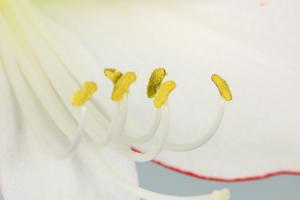A Plant Cell is Placed in Distilled Water Will
Plant cells, like any other cell, require water for normal functioning. However, unlike animal cells, plant cells have a cell wall made of cellulose that surrounds the plasma membrane. This cell wall gives the plant cell support and shape. When a plant cell is placed in distilled water, certain changes occur that affect its normal functioning. Let's explore what happens when a plant cell is placed in distilled water.
Osmosis Takes Place
When a plant cell is placed in distilled water, osmosis occurs. Osmosis is the movement of water molecules from a region of higher concentration to a region of lower concentration through a semi-permeable membrane. In this case, the distilled water has a higher concentration of water molecules compared to the plant cell. The plant cell is semi-permeable, and the water molecules can move across the membrane. Therefore, water moves from the area of high concentration (distilled water) to the area of low concentration (plant cell) until equilibrium is achieved.
The Cell Swells and Becomes Turgid
As water enters the plant cell, it gathers inside the vacuole, a large membrane-bound organelle found in plant cells. The vacuole in a plant cell occupies most of the cell's volume, and it is where water, minerals, and other substances are stored. The influx of water into the vacuole causes it to expand, and the cell membrane and cytoplasm are pushed against the cell wall. The result is that the plant cell swells, becoming turgid.
The Cell Wall Resists Further Expansion
The cell wall is made of cellulose, a tough and rigid material that provides support and protection to the plant cell. As the cell swells and becomes turgid, the cell wall resists further expansion, preventing the plant cell from bursting. When the pressure exerted by the cell contents against the cell wall is equal to the pressure exerted by the cell wall against the cell contents, the plant cell is said to be at turgor pressure. At this point, the plant cell is said to be turgid.
The Plant Cell Functions Normally
When a plant cell is turgid, it functions normally, and the plant grows healthily. The cell's turgor pressure also helps the plant maintain its shape and allows it to stand upright. In addition, when a plant cell is turgid, the stomata, small openings on the surface of the plant leaves, stay open, allowing the plant to absorb carbon dioxide for photosynthesis. Therefore, placing a plant cell in distilled water is beneficial to the plant as long as it does not cause the plant cell to burst due to excessive turgor pressure.
Conclusion
In conclusion, when a plant cell is placed in distilled water, osmosis takes place, and the cell becomes turgid. The cell wall resists the pressure exerted by the expanding vacuole, preventing the cell from bursting. A turgid cell functions normally, allowing the plant to grow, maintain its shape, and absorb carbon dioxide for photosynthesis. Placing a plant cell in distilled water is useful as long as it does not lead to excessive turgor pressure and bursting of the cell.

 how many times do yo...
how many times do yo... how many planted tre...
how many planted tre... how many pine trees ...
how many pine trees ... how many pecan trees...
how many pecan trees... how many plants comp...
how many plants comp... how many plants can ...
how many plants can ... how many plants and ...
how many plants and ... how many pepper plan...
how many pepper plan...






























